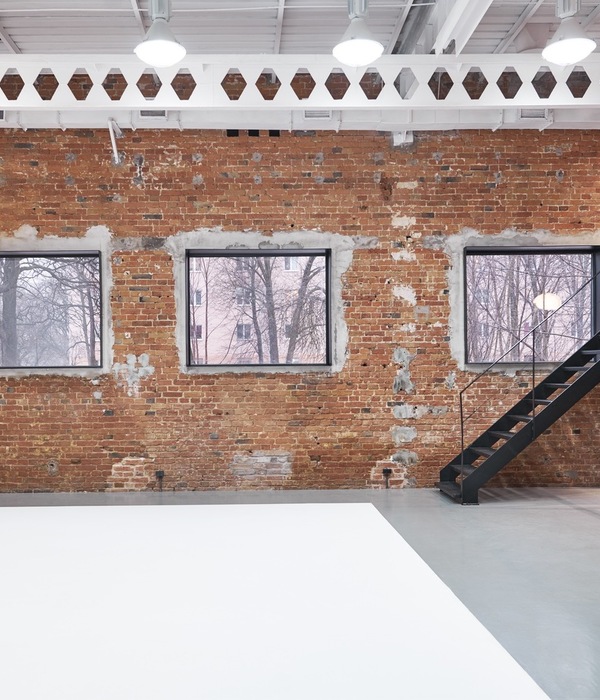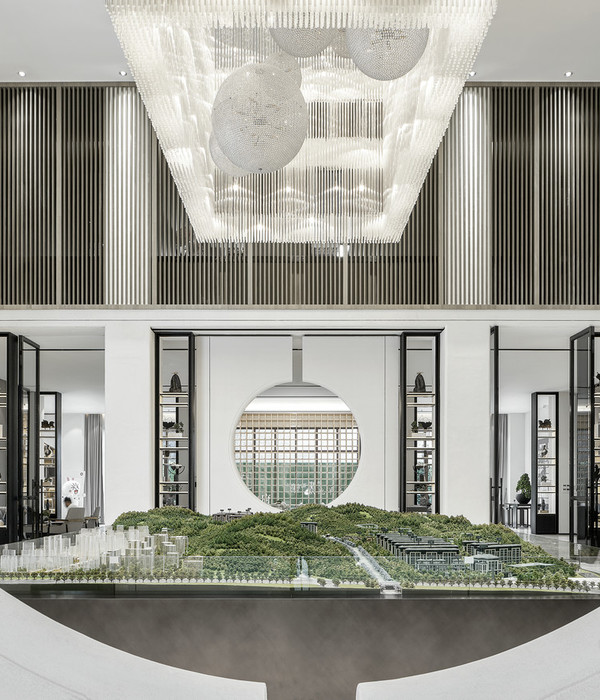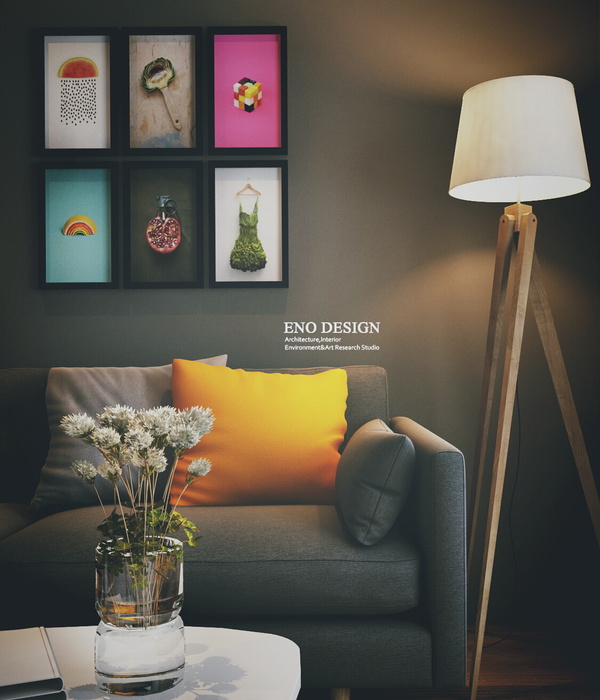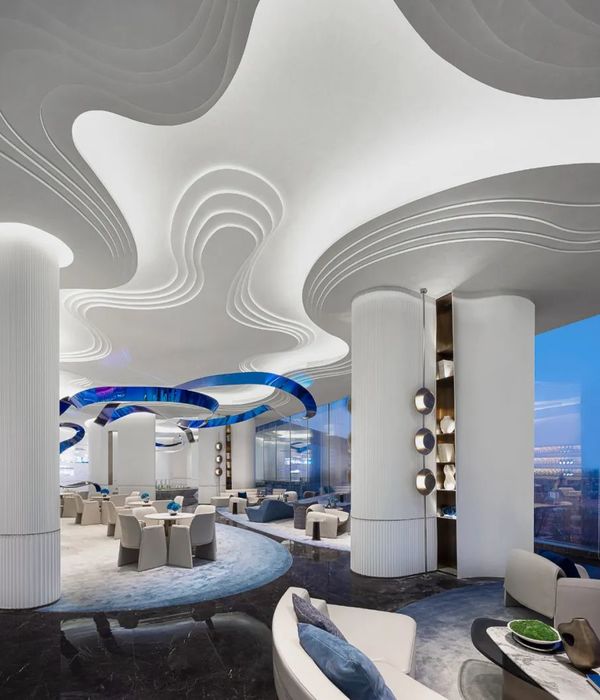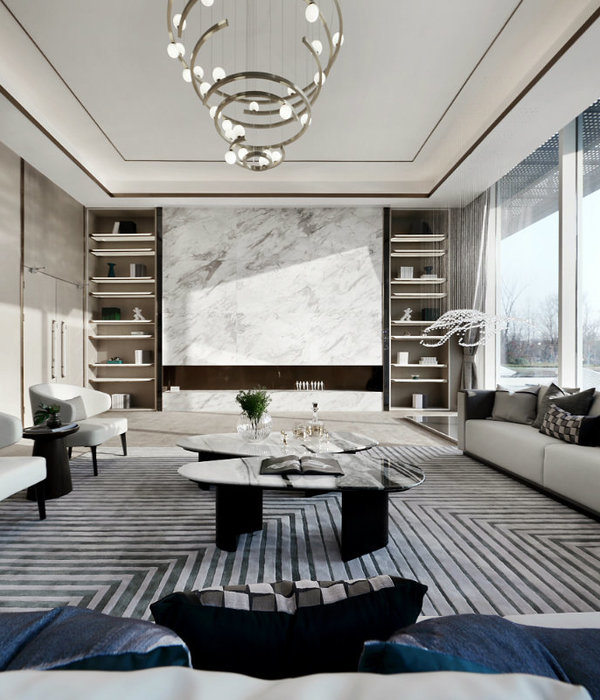WeMarket未马市共享零售空间位于北京颐堤港购物中心,由waa未觉建筑设计事务所最新设计完成。零售空间设计总会与品牌自身文化与需求相辅相成。WeMarket旨在打造中国独立设计师展售平台,为中国独立女性的时尚需求发声。这样的定位也使得设计需要跳脱出传统卖场的销售空间,转向了如何以时尚为媒介,以视觉与空间手段将WeMarket打造为引领潮流、艺术、设计于一体的公共平台的层面。
WeMarket is a Co-Share retail multiband fashion hub. A platform for Emerging Chinese designers in various stages of development. Connecting with the traditional feeling relating to a market experience whilst also generating a community with a co-share sentiment. The brief gave more questions than answers. 1. An Unknown number of designers. 2. An Unknown Duration of Display. 3. An Unknown Rental Requirements.
▼空间概览,overview
从人群中脱颖而出以及蓬勃发展独立社群,正是时尚在本质上的并置需求。然而,志同道合的独立设计师们也像城市生活中的其他传统社群一样,需要能够互动的场所。而waa正是从设计师社群发展与共享理念生成了空间设计的灵感。在人口密集的地区,设计师社群通常会从废弃的仓库与处于过渡期的建筑物中发展而来,这些空间无一不呈现出自由与民主的共享气质。共享零售空间——这一概念的提出同时提出了这样的问题:如何面对数量未知的设计师;如何适应未知的展示时间;如何应对未知的租赁变化。
Fashion by nature is juxtaposition the need to stand out in a crowd and a community which thrives on exclusivity. However like-minded practitioners always need to interact as traditional clusters of similar functions spring together in the city. We took inspiration from developing co-shares from existing communities. Usually these communities grow from abandoned warehouses and structures in a moment of transition in densely populated areas. These communes or squats gave an indication of a co-share identity as close to a democratic model as exists.
▼柜台,counter area
▼空间的组合和构成通过可移动门框解决,the composition of the space is achieved by introducing moveable display racks
零售共享空间究竟会带给人怎样的感受?设计师在人群中如何体现其自身身份标识?waa将设计方向确定为空间需要适应未来设计师群体的不同活动。这种商业模式的本质正是需要将固定的地点转变为可流动的、可解构与重新生成的空间系统。因此,面对空间组织、视觉标识、租赁条件的时刻变化,设计需要具备可以对这些变化做出反应与适应的潜力。零售空间应该帮助设计师进行自我展示,并形成一个具有社群感的共享平台。
What does a Retail Co-Share experience feel like and what do designers need to not loose their identity within the crowd? Our idea pinpointed the need for movement and adapting to new movements in future clusters of designers. The Nature of this business model needs a fluid system of re-generation where fixed locations where not an option. So Space arrangement / Visual identity / and rental changes had to react in extreme cases to potential hour to hour brief requirements. We Market should also facilitate the need for designers to self-promote and a platform to increase the Co-Shares desirability as a community.
▼商品展示区,display area
waa的处理方法是纯建筑式的,把装饰性的构建见到最低,空间的组合和构成都是通过一种构建-可移动门框来解决的。采用推动驱动架构开发组件的技术设计出具有3种机芯的可移动展示架,分别是线性、旋转和平板搁架。设计使用面板作为分隔的要素,营造出3种空间体量:5平米(胶囊空间)/10平米(休闲空间)/20平米(全尺寸空间)。每个设计师可以在2.7m x 1.8m的区域内进行设计品的展示售卖,他们将拥有至少3个可移动的面板、4个底座和1个LED标志。每个设计师都可以打造自己的独特领域,而这些独特领域集合又赋予了空间的共享氛围。面板元素的使用也可以让人们在需要扩大开放空间时能够有多重选择,以便为艺术家装置、时装表演、展览等活动提供灵活多变的空间。
A research driven approach to developing component driven architecture enabled us to engineer moveable display racks with 3 movements, linear, rotational and flatbed shelves. Using the panels as a space divider the store was divided into 3 volumes 5sqm (Capsule) /10sqmm (Resort) /20sqmm (Full). Each designer would own a minimum of 3 moveable panels, 4 plinths and one LED sign located in a 1.8Mx2.7M zone to display. This would increase in multiples relating to area. With each designer given their own territory a sense of co-share was generated. The panels also allowed the client multiple options to expand open spaces to facilitate temporary event space for Presentations including fashion shows or exhibitions, and collaborative spaces for display which is currently occupied by Artist Installations.
▼由固定装置连接到可移动轨道上的框架结构实现了货架的可移动性,a frame structure was attached to a movable track with fixings to allow shelves or hanging rails
在看似简单的理念之下,要创造这种时刻可变环境的复杂性却不应被低估。包含黄色平纹面板的可移动面板通过不锈钢材质而降低了空间的高密度感,用于展示配件或服装的环境与工作区域照明经过了精心设计,由固定装置连接到可移动轨道上的框架结构实现了货架的可移动性……正是这样的设计策略让共享零售空间得以呈现。店内的所有视觉标识设计也都考虑了空间处于永久变化的状态,所有品牌/计师标牌/机架面板/窗帘都可以进行拆卸或更换。
However this simple ambition belied the complexity to create this changing environment. Each moveable panel contains a yellow scrim panel, Environmental and task lighting to display accessories or clothing and a frame structure was attached to a movable track with fixings to allow shelves or Hanging rails. Each panel is de-mountable and designed to be disguised by the use of stainless steel which reduces the awareness of density in the store. All Visual identity in the store was designed to allow a permanent state of change with All Branding / Designer signage / Rack panels / Curtains demounted or replaced.
▼可流动的、可解构与重新生成的空间系统,a fluid space system that can be deconstructed and re-generated
WeMarket共享零售空间为处于不同发展阶段的中国新锐设计师们提供了展示平台,也创造出一个可以达到共情的社群。在这里,独立设计师、跨界艺术家、顶级工匠都可以自由表达自己的创意与灵感,让更多关注独立设计以及原创态度的 Chic girl 感受文化之美,体验创意设计的新浪潮。
Material choices taking into consideration the temperate nature of the space took on a ready- made or common soured aesthetic with the potential refit only one season away. Along with the paired back structures and material simplicity the sense of a warehouse / commune / traditional market feel is imparted on customers. This Buzz associated with a dense trading environment supplemented because of the potential for Ad-hoc / organic planning permutations.
▼试衣间,fitting room
▼休息区域,seating area
▼试衣间顶部,ceiling view from the fitting room
Project Name 项目名称: WeMarket Architect 建筑设计: waa未觉建筑 Client 业主: 未马市 Location 项目地点: 北京 颐堤港 2层 Site Area 场地面积: 617平米 Completion 建成时间: 2018年四月 Photographer 摄影师:舒赫
{{item.text_origin}}

